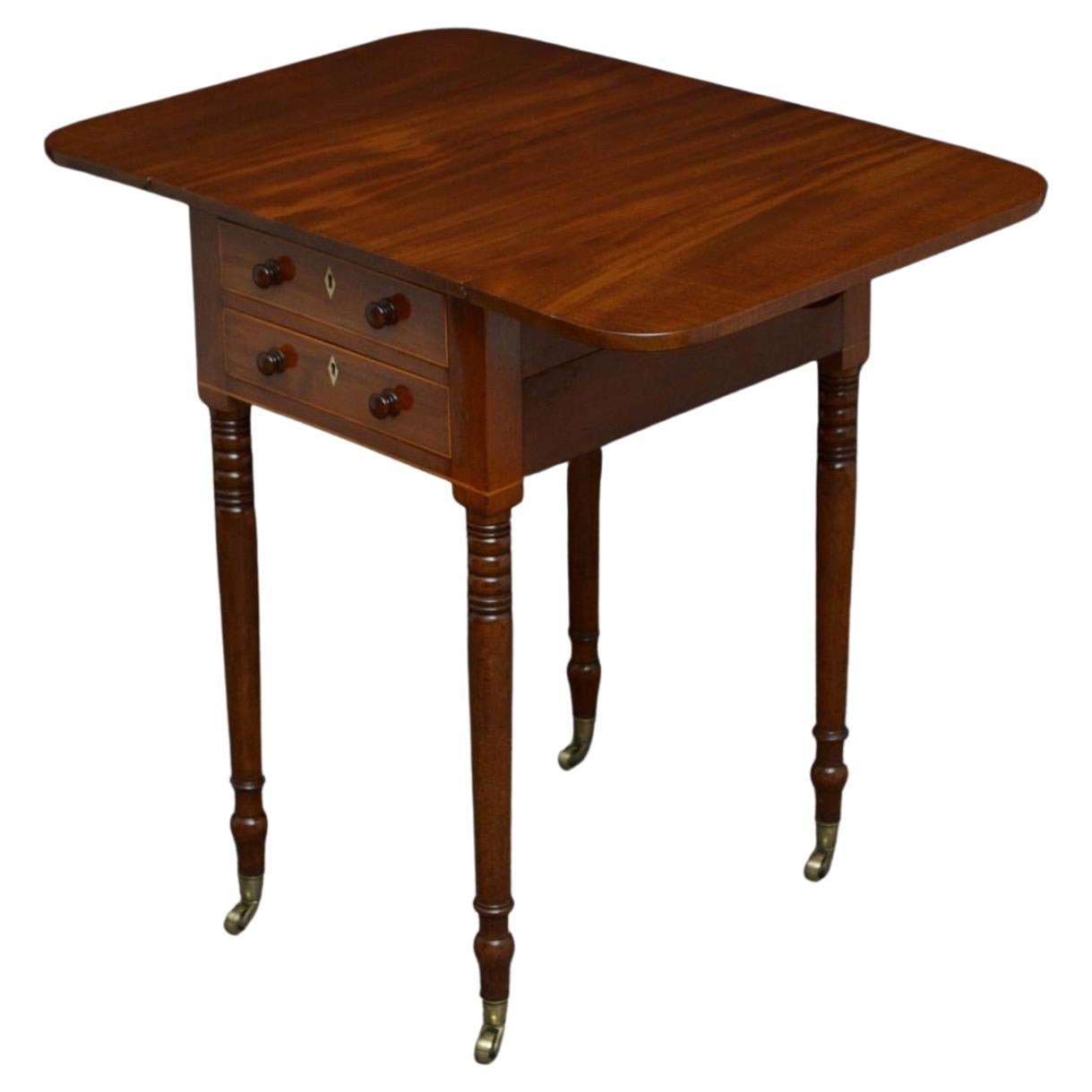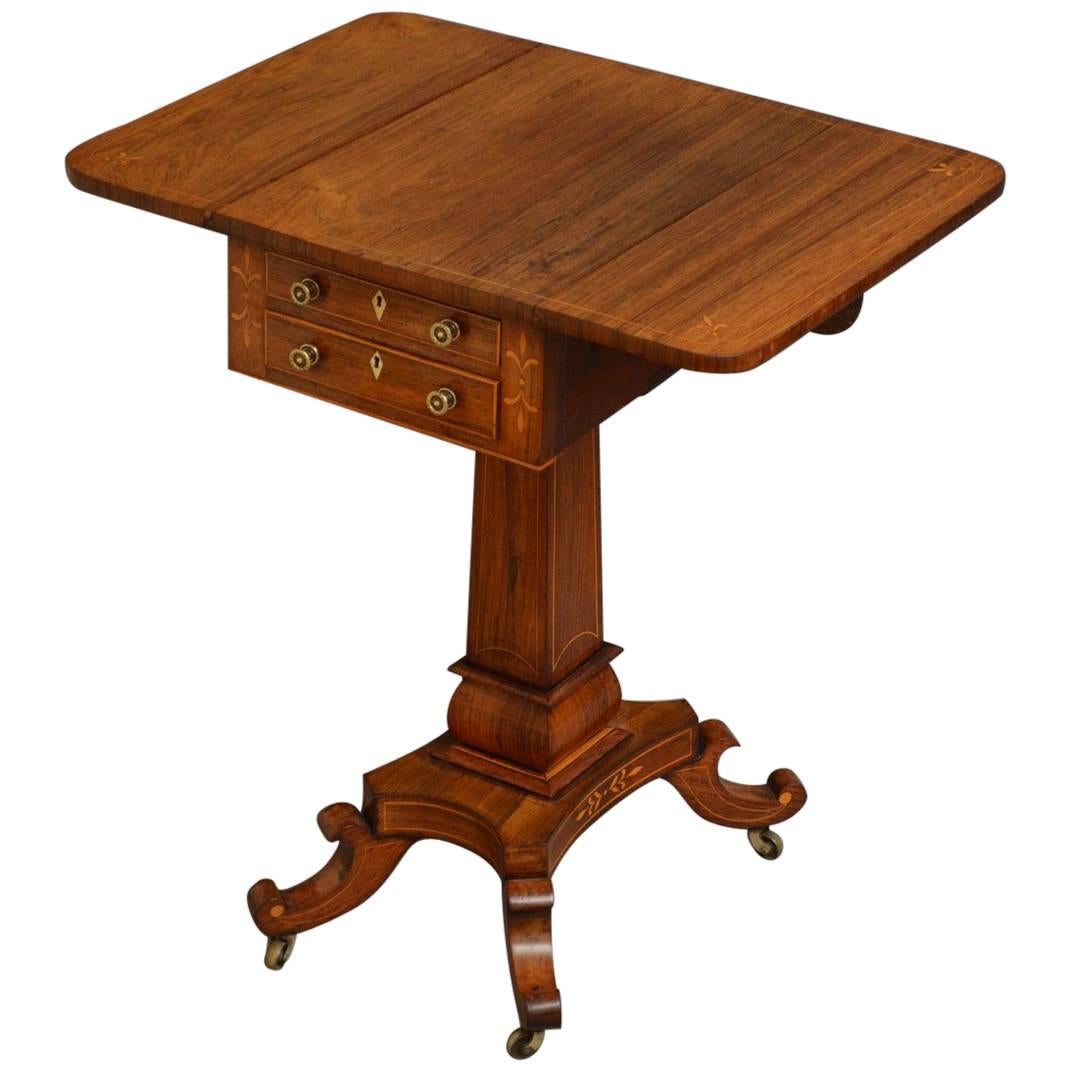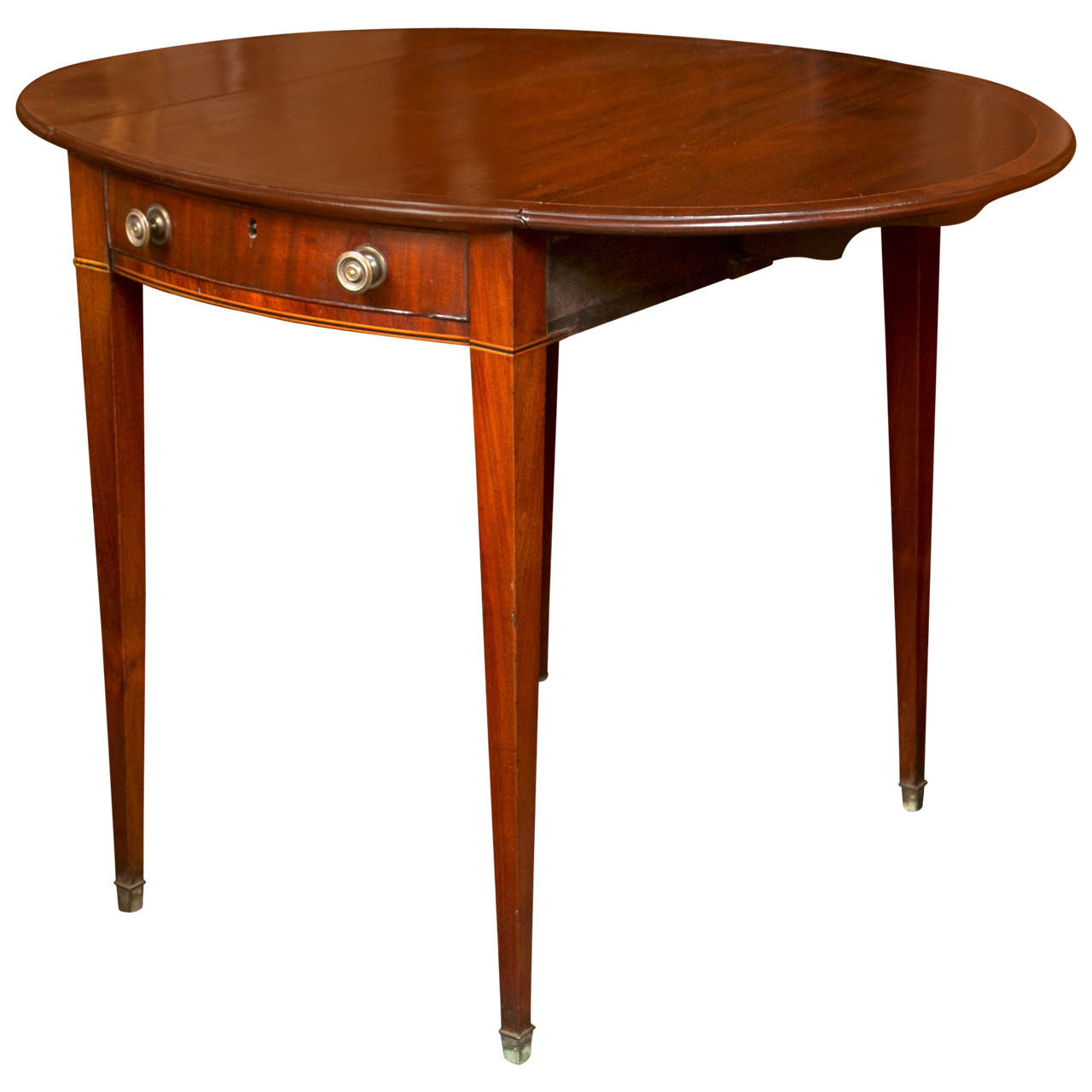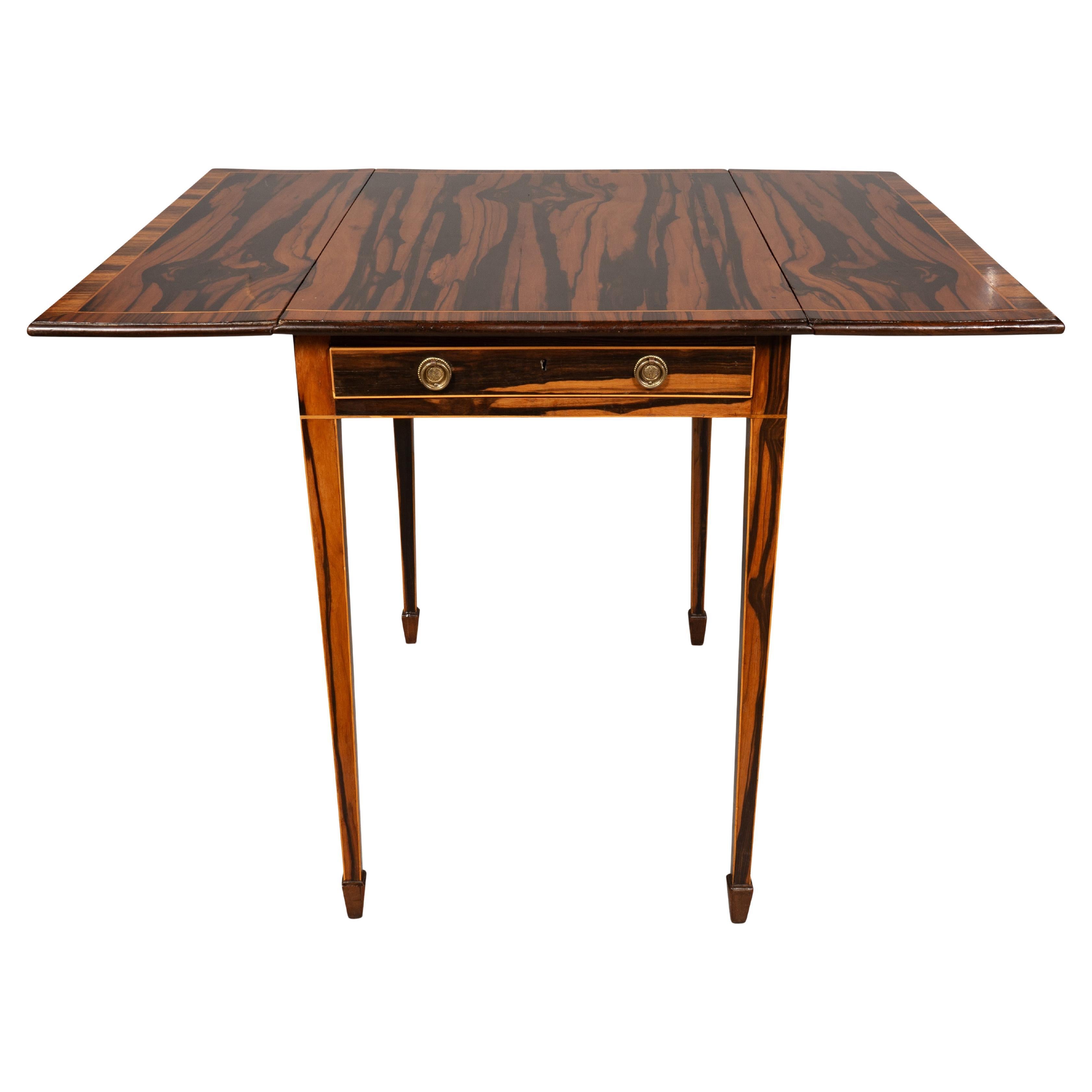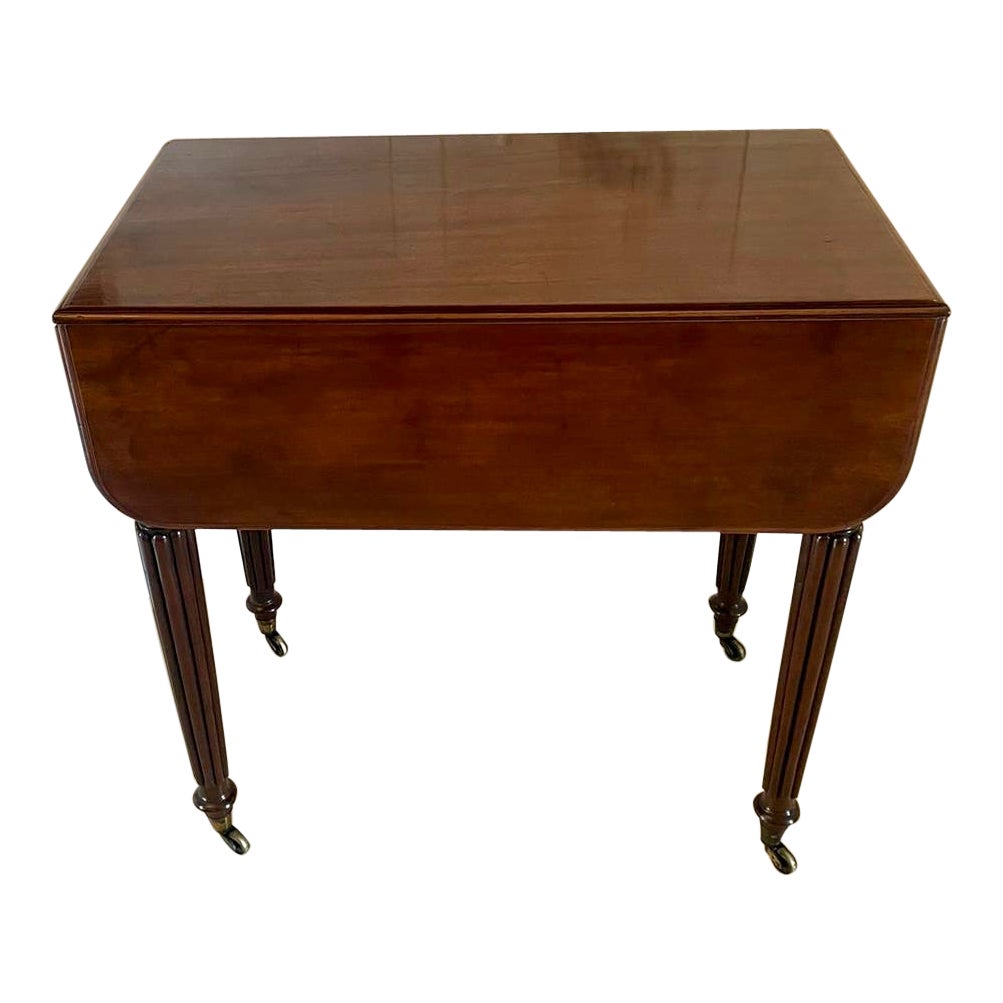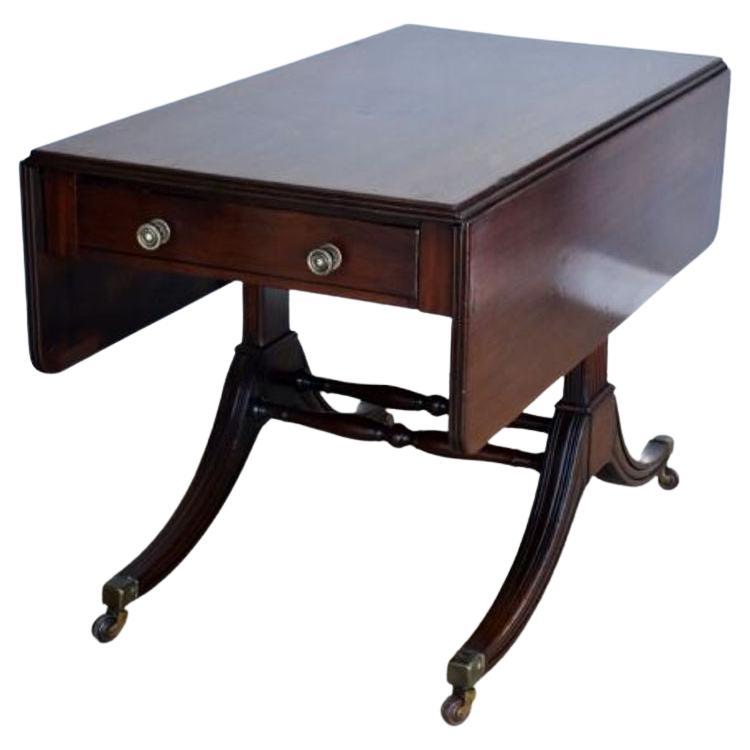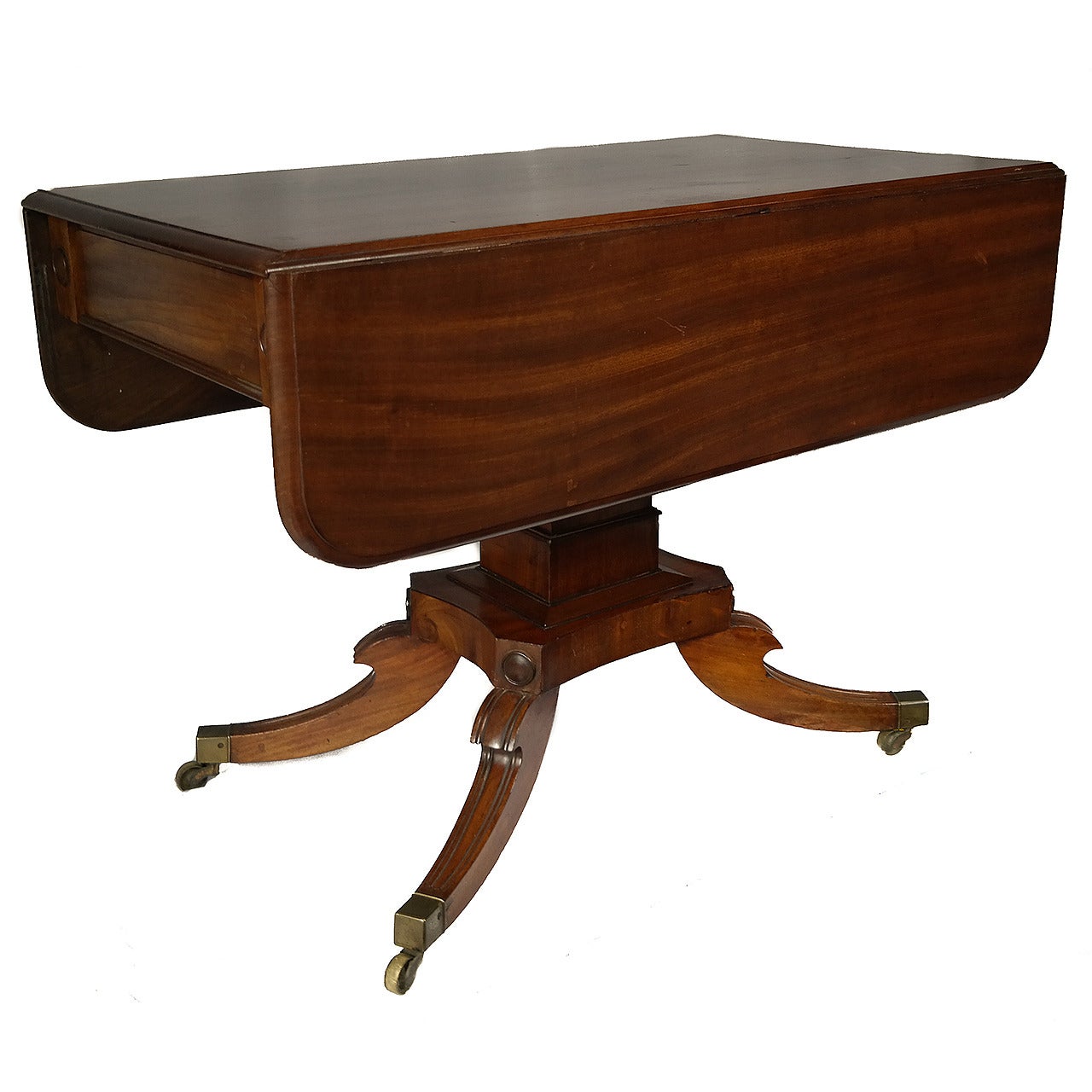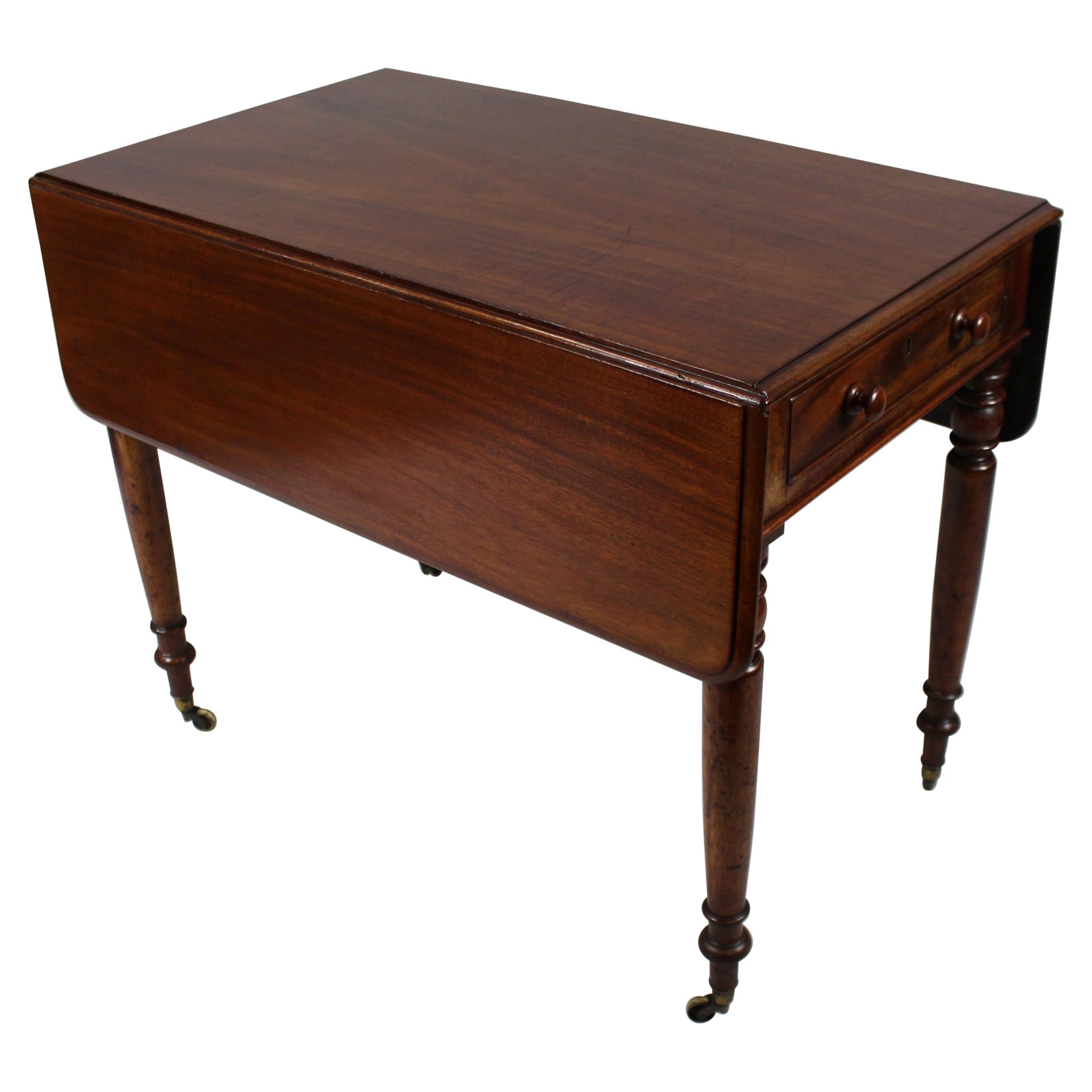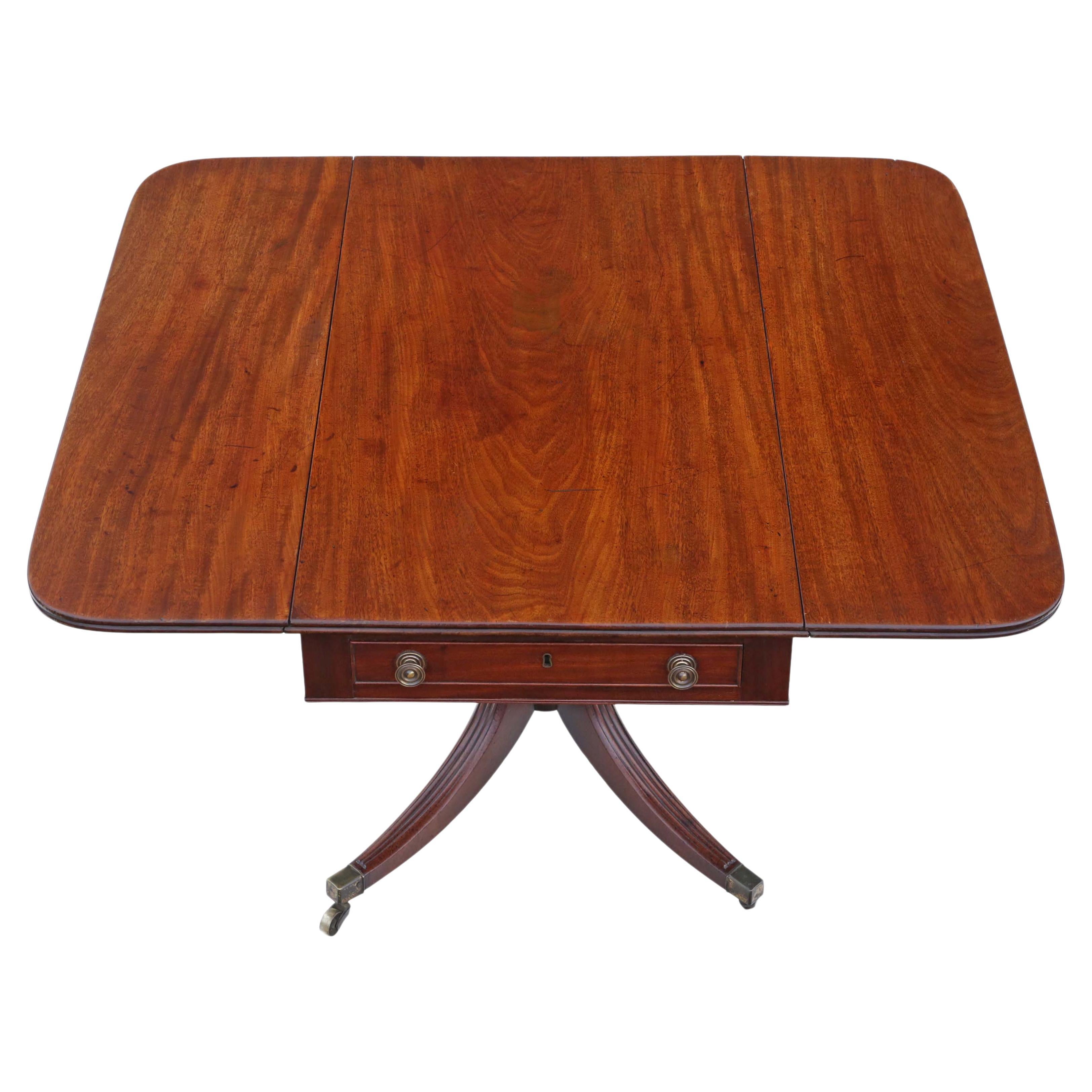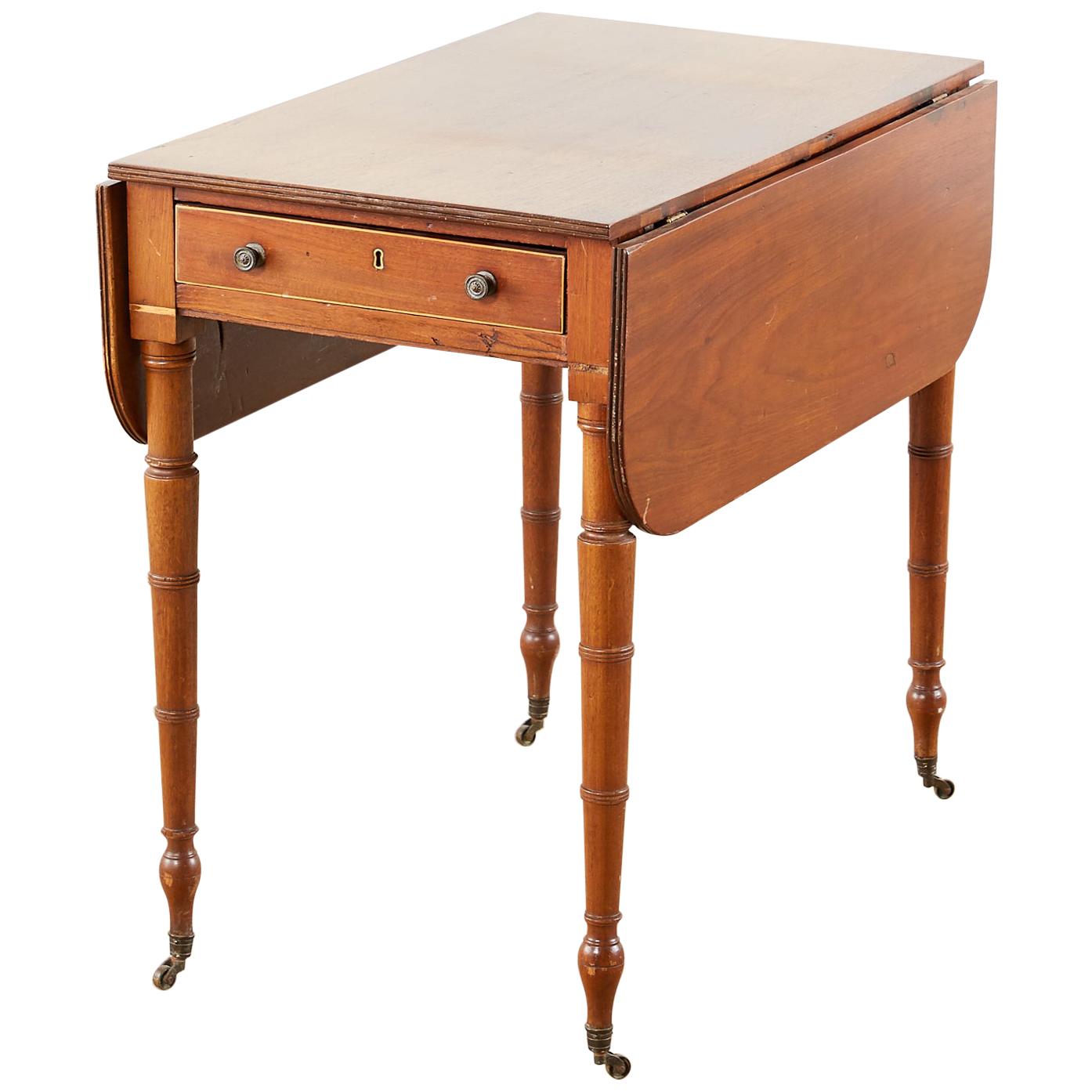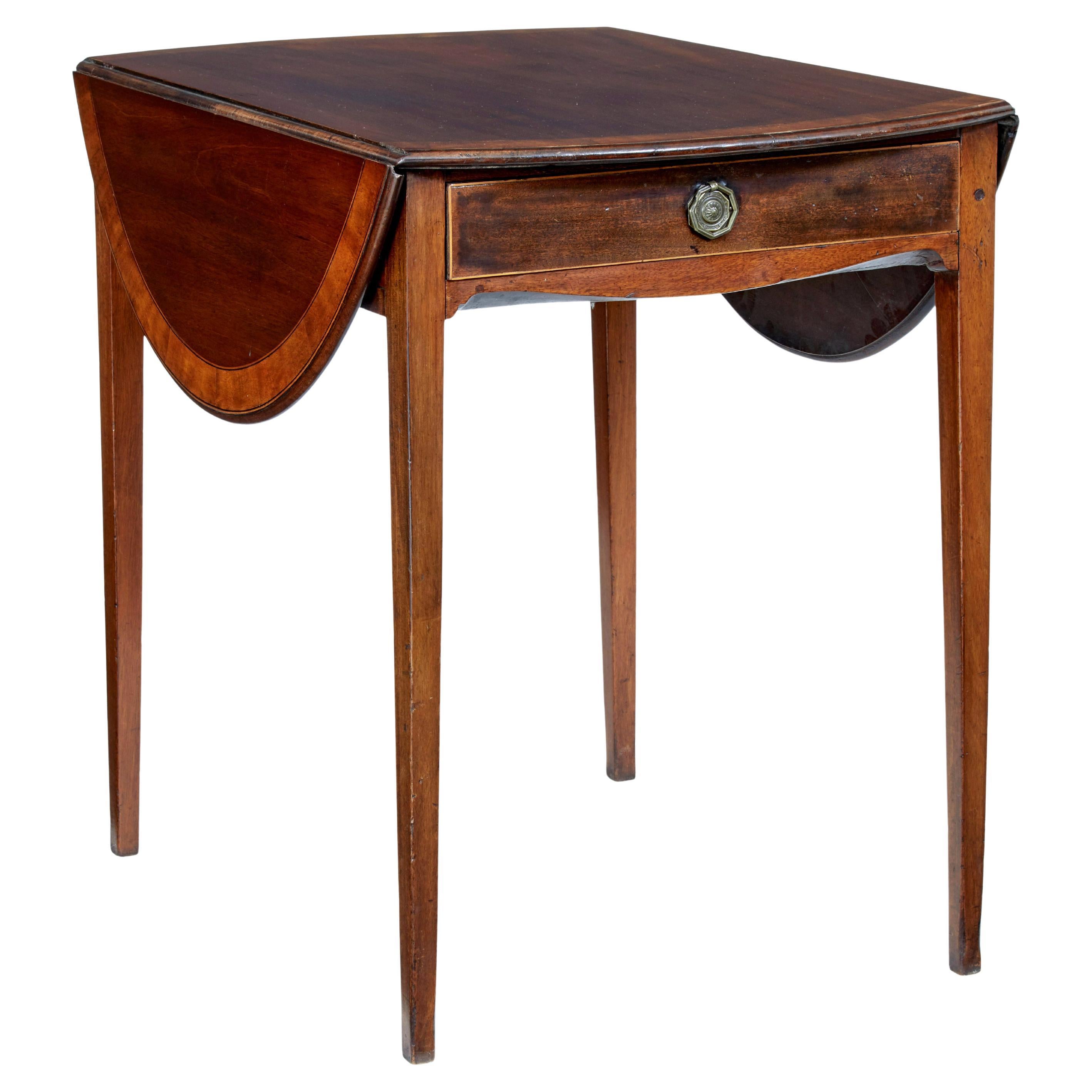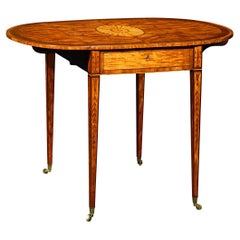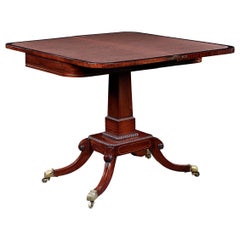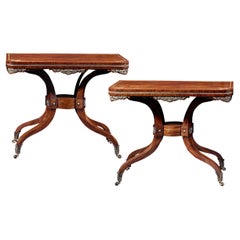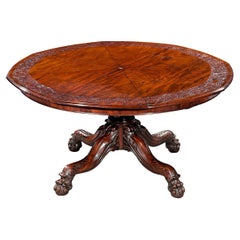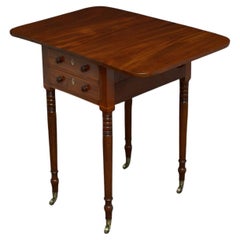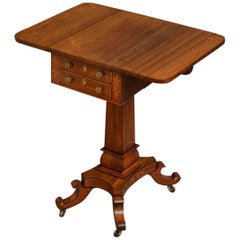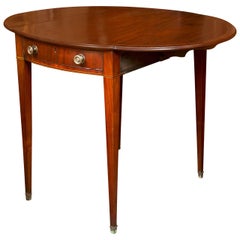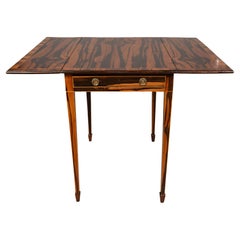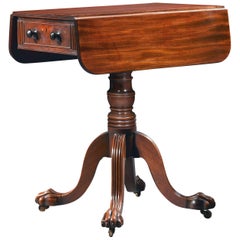
Regency-Period Pembroke Table
View Similar Items
Want more images or videos?
Request additional images or videos from the seller
1 of 6
Regency-Period Pembroke Table
About the Item
- Attributed to:Gillows of Lancaster & London (Maker)
- Dimensions:Height: 28 in (71.12 cm)Width: 29.5 in (74.93 cm)Depth: 24.5 in (62.23 cm)
- Style:Regency (Of the Period)
- Materials and Techniques:
- Place of Origin:
- Period:
- Date of Manufacture:circa 1815
- Condition:
- Seller Location:New Orleans, LA
- Reference Number:Seller: 30-06301stDibs: LU89115129473
About the Seller
5.0
Recognized Seller
These prestigious sellers are industry leaders and represent the highest echelon for item quality and design.
Established in 1912
1stDibs seller since 2010
105 sales on 1stDibs
Typical response time: 10 hours
Authenticity Guarantee
In the unlikely event there’s an issue with an item’s authenticity, contact us within 1 year for a full refund. DetailsMoney-Back Guarantee
If your item is not as described, is damaged in transit, or does not arrive, contact us within 7 days for a full refund. Details24-Hour Cancellation
You have a 24-hour grace period in which to reconsider your purchase, with no questions asked.Vetted Professional Sellers
Our world-class sellers must adhere to strict standards for service and quality, maintaining the integrity of our listings.Price-Match Guarantee
If you find that a seller listed the same item for a lower price elsewhere, we’ll match it.Trusted Global Delivery
Our best-in-class carrier network provides specialized shipping options worldwide, including custom delivery.More From This Seller
View AllGeorge III Pembroke Table attributed to Ince & Mayhew
By Ince & Mayhew
Located in New Orleans, LA
This extraordinary George III-period Pembroke table by London cabinetmakers Ince & Mayhew displays the understated sophistication of the late Georgian era. The surface of the table — including both the central panel and the signature Pembroke hinged flaps — is beautifully detailed with satinwood marquetry, inlaid with a fan medallion and foliate motifs executed with the greatest precision and craftsmanship. The table is set upon slender, tapering legs. The design is indicative of the rising influence of and interest in Neoclassical patterns, favoring motifs from nature or Classical antiquity over the extravagance of the Rococo style.
William Ince and John Mayhew joined their skills as furniture designers and cabinetmakers, opening a firm together on Broad Street in 1759. Over the next forty years, the duo would execute many commissions, and develop a volume of engraved designs entitled The Universal System...
Category
Antique 18th Century English Georgian Drop-leaf and Pembroke Tables
Materials
Satinwood
Regency-Era Card Table
Located in New Orleans, LA
This ingenious late Regency card table was designed with both beauty and entertainment in mind. When not in use, its folded D-shaped top sits against the wall providing an elegant si...
Category
Antique Early 19th Century English Regency Game Tables
Materials
Wood
$8,850
Regency-Period Rosewood Card Tables
Located in New Orleans, LA
These exceptional Regency card tables were designed with dual purposes in mind. Crafted of rosewood, the tables serve as attractive console tables when closed. When opened, the table...
Category
Antique 19th Century English Regency Card Tables and Tea Tables
Materials
Brass
Expanding Jupe Dining Table by Johnstone and Jeanes
By Robert Jupe
Located in New Orleans, LA
This exceptionally rare circular expanding dining table was designed by Robert Jupe and crafted by the English cabinetmakers Johnstone & Jeanes, successors to Johnstone, Jupe & Co. One of only a handful known from the firm, this table illustrates the Victorian era's quest to combine technical innovation with superb and beautiful craftsmanship. Complete with its original leaves, the table’s circular top is formed from eight separate segments. When the top is rotated, an ingenious swivel mechanism causes the sections to diverge, allowing a set of small or large leaves to be inserted for an adjustable increase in size.
The design for the table was patented by Robert Jupe in 1835, who had envisioned “an improved expanding table so constructed that the sections composing its surface may be caused to diverge from a common center and that the spaces caused thereby may be filled up by inserting leaves or filling pieces.” The first of these fascinating tables were created between 1835 and 1840 during his partnership with John Johnstone and their firm of Johnstone, Jupe & Co. in London. Jupe left the company in 1840, after which the firm changed its name due to a new partnership and became Johnstone & Jeanes. The firm would eventually achieve international fame for its remarkable designs, exhibiting a "circular table made on the expanding principle" like this one at the Great Exhibition of 1851.
Jupe was not alone in his fascination with combining the technical merits of engineering and mechanics with the more artful pursuit of cabinet making. The first half of the 19th century saw a prolific increase in the popularity of applying new ideas to furniture principles, which allowed furniture to serve many purposes. The resulting “patent” furniture...
Category
Antique 19th Century English Victorian Dining Room Tables
Materials
Mahogany
Russian Malachite and Pietre Dure Plinths
Located in New Orleans, LA
The exquisite art of pietre dure is at its absolute finest in this spectacular pair of Russian ormolu and malachite plinths. True works of art of the Restauration period, these plinths each feature a matching pietre dure mosaic crafted of the finest stones, all chosen to create a sense of depth and dimensionality in the final work. Depicting an onyx vase with tulips, roses, daffodils, magnolia and other flowers, these pietre dure panels are among the finest examples of this ancient art we have seen.
The pietre dure is complemented by malachite panels of the highest quality, exhibiting exceptional depth through its extraordinary cellular structure. Malachite is one of Russia’s most precious stones, and its presence in these plinths indicates commission and ownership by an individual of considerable status. Mounted in an excellent stepped ormolu base, these plinths originally served as bases for vases or candelabra.
The overall execution and appearance of these plinths is very characteristic of the taste associated with the immensely wealthy collector Nicolas Demidoff. As early as 1806, Demidoff had commissioned the Parisian goldsmith Henri August to supply a guéridon; in 1819, he ordered famed French bronzier Pierre-Philippe Thomire to supply mounts for a massive malachite vase (now in the Metropolitan Museum of Art, New York), as well as a console table with legs in the form of Nike. Other commissions included a table given as a gift to Grand Duke Leopoldo II of Florence, now in the Pitti Palace. Demidoff eventually settled in Florence in 1822 and became Russian minister to the Tuscan Court. Elevated to the rank of Count of San Donato by the Grand Duke, he built a magnificent villa at San Donato on the site of lands formerly owned by the Medici. The villa was later inherited by Anatole, his son, Prince of San Donato, and there are records which confirm transactions he had with the Opificio delle Pietre Dure.
The 19th century proved to be the golden age of Russian malachite. The stone became a sign of prestige and a token of wealth, so much so that Russian papers of the time wrote: "To afford having a big piece wrought in malachite is synonymous to owning diamonds." Year after year the Russian (Romanov) treasury paid increasingly unreasonable prices to hoard the best malachite, much of which went into Romanov palaces and extravagant objets d'art. The Hermitage Museum possesses a collection of over two hundred examples of this “palatial” malachite...
Category
Antique 19th Century Russian Pedestals
Materials
Malachite, Ormolu
$168,500 / set
Regency Library Table
Located in New Orleans, LA
This handsome Regency library desk is crafted of rich mahogany and features the straightforward design prevalent in England during the early 19th ...
Category
Antique Early 19th Century English Regency Desks and Writing Tables
Materials
Leather, Mahogany
$14,500
You May Also Like
Regency Pembroke Table
Located in Whaley Bridge, GB
Sn4707 Regency, mahogany, drop leaf occasional table, having figured mahogany top above 2 string inlaid drawer / 2 dummy drawers to opposite side, all fitted ...
Category
Antique 1820s British Regency Drop-leaf and Pembroke Tables
Materials
Mahogany
$2,552
Regency Rosewood Pembroke Table
Located in Whaley Bridge, GB
Sn4289 fine Regency drop leaf table in rosewood, having string inlaid top above two string inlaid drawers and two dummy drawers to back, all fi...
Category
Antique 1820s English Regency Side Tables
Materials
Rosewood
$2,599 Sale Price
20% Off
Regency Mahogany Pembroke Table
Located in Woodbury, CT
A narrow boxwood strand separates the mahogany self-band from the center field of this delicate Pembroke table. With its shaped-front drawer following the curvature of the top and it...
Category
Antique 19th Century British Regency Drop-leaf and Pembroke Tables
Materials
Boxwood, Mahogany
Regency Calamander Pembroke Table
Located in Essex, MA
Rectangular top with rectangular hinged drop leaves, frieze drawer with brass ring handles and raised on square tapered legs. Spade feet. Calamander is an exotic wood imported from I...
Category
Antique 1810s English Regency Drop-leaf and Pembroke Tables
Materials
Ebony
Regency Palisander Diminutive Pembroke Table
Located in Essex, MA
Rectangular top with rectangular drop leaves over a frieze drawer, raised on square tapered legs and casters.
Category
Antique Early 1800s English Regency Drop-leaf and Pembroke Tables
Materials
Palisander
Antique Regency Quality Mahogany Pembroke Table
Located in Suffolk, GB
Antique regency quality mahogany Pembroke table having a quality mahogany top with two drop leaves and a molded edge above one working drawer and a dummy drawer with original turned ...
Category
Antique 19th Century English Regency Drop-leaf and Pembroke Tables
Materials
Other
